The road to desktop interoperability
Desktop interoperability is a longstanding concern for capital markets firms. Most traders use several applications throughout the day, including trading platforms, analytics tools, and spreadsheets. The picture becomes more complex when you consider middle and back-office teams, who often use other applications suites entirely. Individually, each application may be an excellent choice. But day-to-day tasks are rarely confined to a single software tool. Most workflows require more than one application, which can cause a range of problems.
In the business-to-consumer (B2C) space, interoperability is an established practice. In some cases, dominant players have established core interoperability standards on their own technology platforms. In others, co-operation has led to the development of widely adopted standards, like web or open banking APIs. These initiatives have helped deliver seamless user experiences and more robust consumer functionality. But progress has been slower for business-to-business (B2B) applications, including in the capital markets. Nonetheless, the huge potential benefits of interoperability continue to drive new developments.
What problems does interoperability seek to solve?
Working with multiple tools can be inefficient in terms of time and the mental effort of ‘context switching’. Such inefficiencies are small but can become significant over the course of a whole day. Multiple applications may be challenging to manage across the trader’s desktop, especially if screen space is at a premium (as it often is in home working setups). Switching between apps also introduces the possibility of errors – for example, if data needs to be manually rekeyed in each application.
Desktop interoperability aims to ensure that different tools work together seamlessly. This allows users to focus on their workflows rather than their tools. How can firms achieve this goal, and what factors must they consider?
Different approaches to interoperability
When working towards interoperability, the first challenge is defining what you want to achieve. Setting a clear scope will help you to select the most effective solution, and developing a detailed understanding of your current workflows will allow you to identify what processes to focus on. Which workflows are most high value to your business? And which involve interactions between the most different applications? Are there any specific pain points that are causing disproportionate problems for users? Answering these questions will help to focus your efforts where they will achieve the most value. It will also help you to select the right overall approach to interoperability.
APIs and standards
An API connection may be the most effective solution for interactions between two specific applications. An application’s API will expose specific data and/or functionality to other applications. For example, a trading screen might expose access to order entry functionality, allowing orders to be fed directly from an Excel sheet. An API can be a great way to address a specific pain point or to implement a particularly high-value integration. And APIs can also be scaled to deliver interoperability across the entire desktop, mainly if they use a widely supported standard like FDC3.
FDC3 is an industry-led initiative to develop a FIX-style open standard for desktop interoperability. It defines standardized formats for messages and actions to streamline building interfaces. FDC3 is the leading standard for interoperability in capital markets but has not yet achieved universal adoption. According to A-Team Insight, some stakeholders have cited its focus on core data sync processes as a limiting factor, pointing out that many real-world applications require deeper functionality – for example, UI integration or user authentication. Others have argued that this simplicity makes adoption easier. In any case, if you can apply a single standard to all your interoperability requirements, it can make the process of developing and deploying integrations much more straightforward.
Dedicated interoperability solutions
However, if your requirements are more complex, there might be better approaches. For example, you may need to support bespoke or legacy applications incompatible with modern standards. For such applications, implementing each integration separately imposes a high burden, both in terms of initial effort and ongoing maintenance. In cases like these, a more comprehensive solution might be required.
A desktop interoperability layer is a dedicated interface designed to allow multiple applications to interact with each other. Because each application only interacts with the layer, this removes the burden of writing and maintaining multiple direct interfaces. It also streamlines onboarding a new application since you only need to build a single interface to allow access to all other apps that connect to the layer. And it can also help to integrate legacy technology that is not directly compatible with newer systems. While this can deliver benefits in simplicity and agility, it can also present issues. For example, it can be difficult to manage access or data permissions for individual applications. And you may not want to commit to a single ‘one-size-fits-all’ solution across all your applications and workflows. Ultimately you may decide that a dedicated interoperability layer is excessive for your requirements.
New approaches may also emerge. For example, could containerization technology be leveraged to enable interoperability? Many financial services firms have already heavily invested in containers to enable more agile deployment and to upgrade legacy systems. But could running applications within containers also deliver interoperability benefits? For example, by allowing standardized API connections at the container level? Whether or not this proves to be a viable solution, given the focus and resources that are being invested in this area, we can expect more new ideas to appear in the future.
Exploring support and collaboration options for interoperability
You’ll also want to consider whether you need support to achieve your interoperability goals. You may prefer developing in-house, especially if your current desktop environments are highly customized. But even if you have access to the necessary knowledge and resources, you’ll need to decide whether this is best employed in delivering interoperability or whether it could add more value elsewhere.
If you decide to bring in outside assistance, you have several different options. Many software vendors are increasingly invested in enabling interoperability, both through API access to individual applications and through offering dedicated interoperability solutions. Working with your current vendors offers you the benefits of leveraging your existing relationships and gives you access to dedicated expertise on the tools you use every day. There are also several firms specializing specifically in interoperability, that can provide support in integrating both vendor and bespoke applications. Working with a specialist provider can allow you to take a holistic approach to delivering interoperability across your entire desktop environment. Whatever route you decide to take, it’s critical to understand your challenges and requirements first. Having clear goals will allow you to select and deliver the most appropriate solutions and help you to work effectively with third-party providers.

What are your interoperability goals?
Wherever you are on the road to desktop interoperability, contact ION today to find out how we can help.


